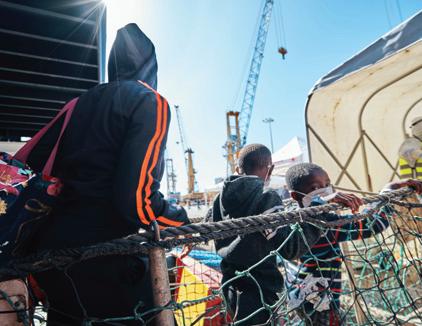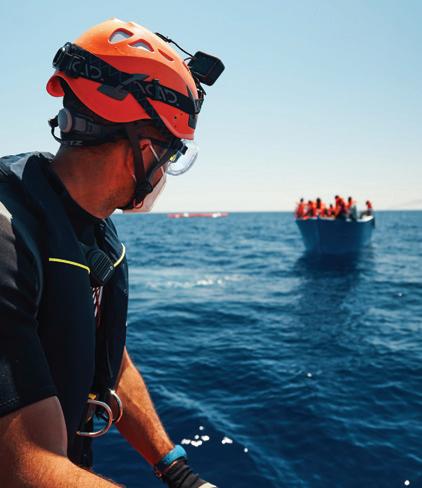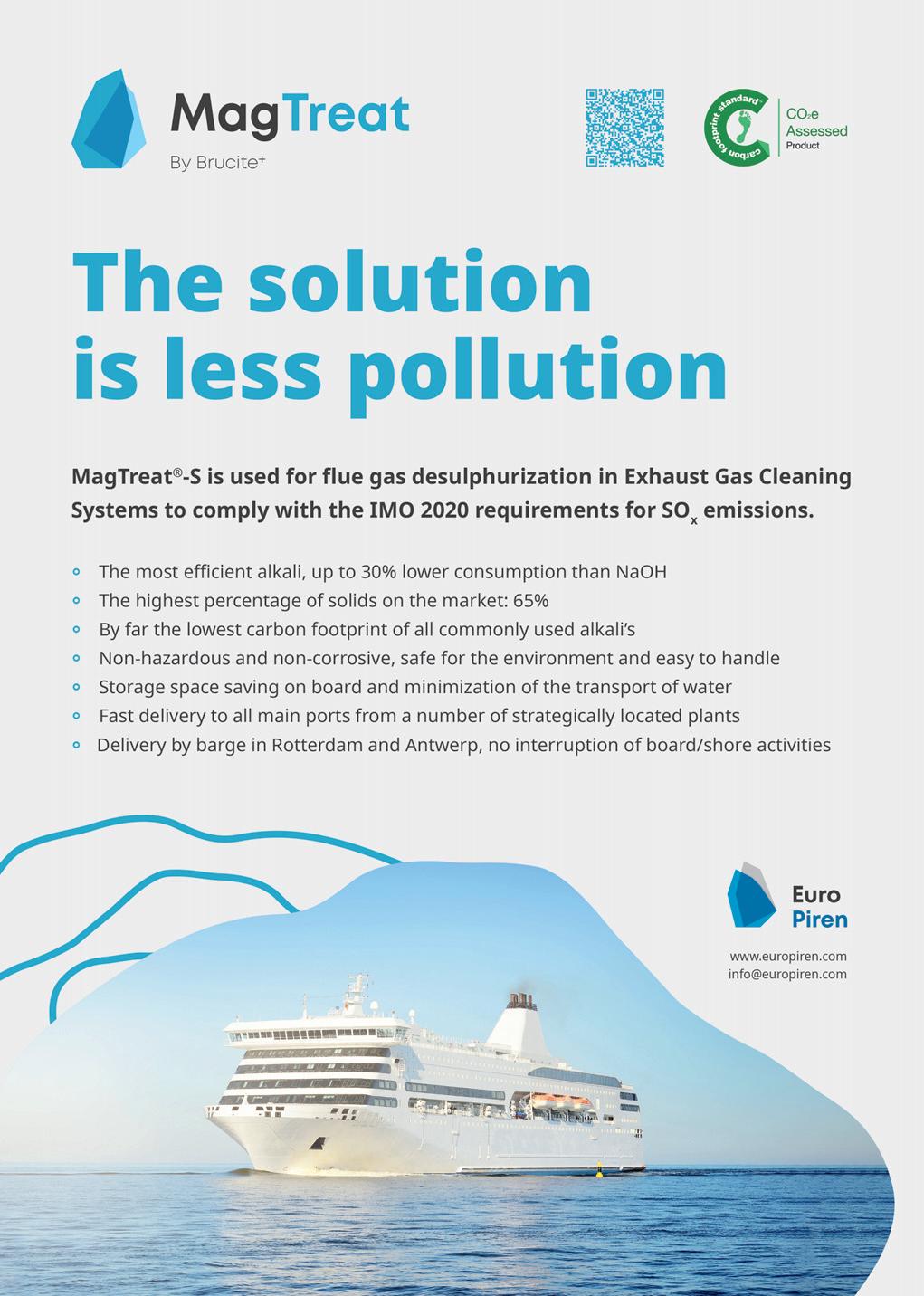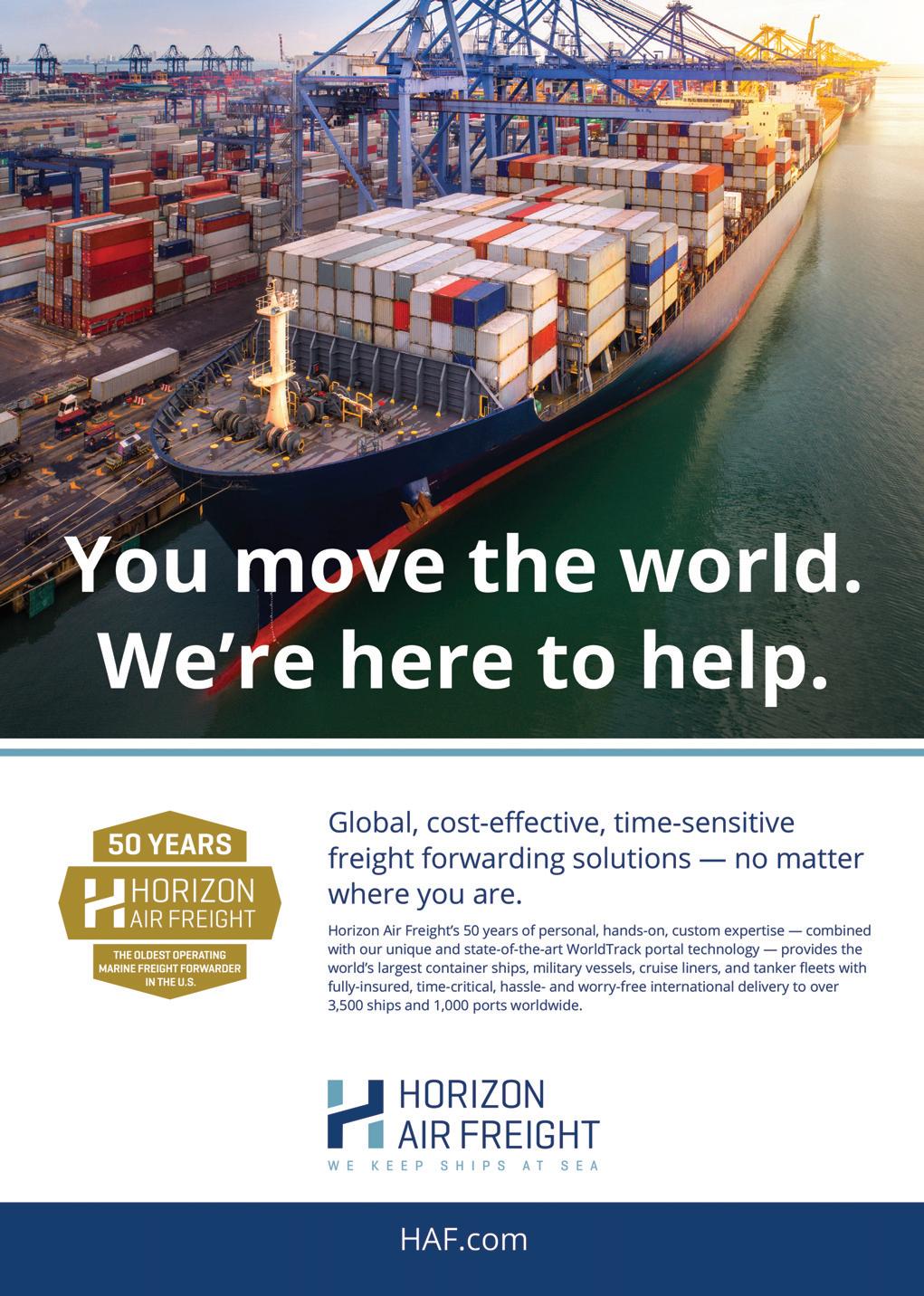
7 minute read
Civilian sea rescue
Sea-Eye – the charity that has saved over 16,000 migrant lives at sea.
CIVILIAN SEA RESCUE
Advertisement
in the Mediterranean
“Human rights and the laws of the sea. They’re there for a very, very good reason. But sometimes we can forget why that is. I want to remind everyone that all these concepts are only worth more than the paper they’re written on if we actually put our words into action. And if we don’t, it costs human lives. Every sailor knows, one does not simply leave people behind at sea.”
These were the words spoken by Sophie Weidenhiller, Spokesperson for Sea-Eye, a non-profit and civil sea rescue organisation founded in Germany in 2015. Set up in response to what its founders deemed as the failed migration policies of the European Union, Sea-Eye undertakes search and rescue operations in international waters to save desperate people trying to flee via one of the world’s deadliest escape routes in modern times, in unseaworthy vessels. To date the organisation has completed over 70 missions, where they have saved over 16,000 individual human lives.
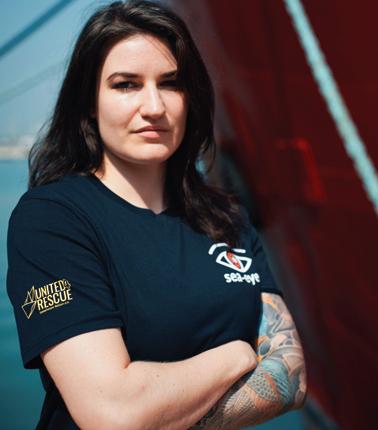
Spokeswoman –Sophie Weidenhiller
Michael Buschheuer was an ordinary working man who one day decided that he could no longer stand idly while migrants continued to drown day after day in the Mediterranean Sea. So, with a small group of family and friends he set up Sea-Eye in 2015 to do their bit to help during this crisis.
Sophie Weidenhiller, Spokesperson for Sea-Eye said: “He decided to gather some money, and he started this NGO. From then it just kept growing and more people got excited about this and started joining.”
Although Michael is no longer part of Sea-Eye, the charity continues his original mission and has grown since. The charity is able to go on more missions and have bigger ships. In the early days of the charity, the volunteers of Sea-Eye were only able to provide relief by offering supplies and lifejackets as the small ships the charity utilised simply did not have the space to offer much more. So in the intervening years, the charity has worked with larger vessels to assist them.
But the organisation had to grow because the crisis kept on worsening.
Sophie explained what caused her to volunteer with Sea-Eye in 2018: “As a child, I’d love to sail with my dad and we always sailed in the Mediterranean Sea. So that whole area is near and dear to my heart, and to watch it become a mass grave, was just unbearable to me.”
www.sea-eye.org
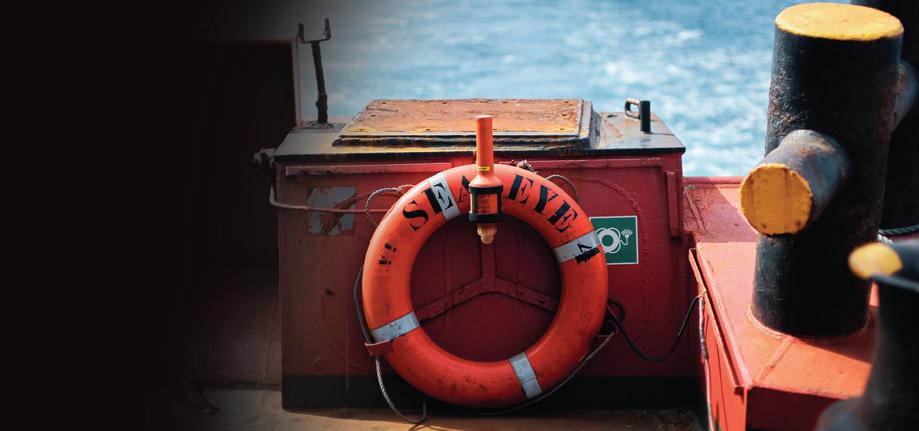
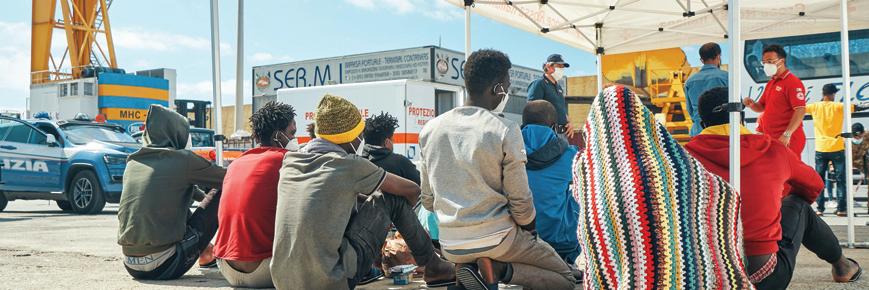
All hands on deck
The first ship the organisation used on its missions back in 2015 was an ex-fishing cutter. Built in 1958 and known as the original Sea-Eye, the 26.5m long ship was converted by volunteers to a rescue ship before being transferred to Sicily. It completed more than 20 rescue operations, saving the lives of over 10,000 people before ceasing missions.
After seeing just how dire the situation was the organisation later purchased Seefuchs in 2017 to reach even more of those in need. The former research vessel was almost identical to the SEA-EYE in construction and its crew were actively engaged in multiple rescue missions in the Mediterranean until 2018.
In 2018, Sea-Eye procured it’s third ship, this was a 38m research vessel, formerly the Professor Albrecht Penck, its name was changed to commemorate one of the most poignant tragedies reported during the crisis. This was the Kurdi family, Abdullah Kurdi, his wife Rehanna Kurdi and his two sons Ghalib and Alan fled Turkey in 2015.
Tragically the boat the family were sailing on sank, resulting in all but the father losing their lives at sea. This was symbolic of many a fate of those who attempted to cross the Mediterranean. On 10th February 2019, Abdullah Kurdi christened the ship after his youngest son, Alan Kurdi. This vessel saved nearly 1,000 people from the sea in just 12 months but has since left Sea-Eye, leaving behind heavy hearts.
Currently the only ship that Sea-Eye operates is its newest, the Sea-Eye 4. This former offshore supply vessel was converted for rescue operations with the support of United4Rescue. The ship by design is well suited to sea rescue as it has greater space for first aid and the onboard infirmary complies with modern standards. The vessel is also equipped with two RHIBs that can reach those in distress as quickly as possible.
Sophie commented: “We also work with a German NGO called German Doctors who sponsored the whole steel container that we call the hospital. She was a supply vessel so there was lots of stuff that we didn’t need that we removed to make room for all the essential search and rescue equipment we need.”
While official number of those who have lost their lives is hard to ascertain, it is estimated to be in the tens of thousands. However, the true scale is much higher.
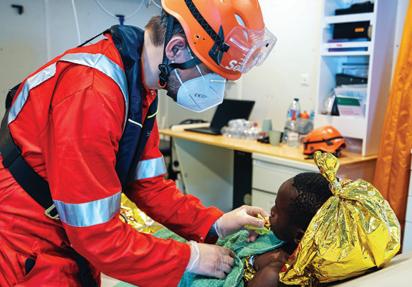
Sea-Eye – the charity that has saved over 16,000 migrant lives at sea.
No time to anchor
After starting out as a small close-knit group of volunteers in the beginning, Sea-Eye now has a pool of over 1,000 voluntary crew members and 800 association members.
“Whenever we go on our rescue missions, the crew on board the Sea-Eye 4 is made up of 25 people. Over half professional seafarers, whilst the volunteers pay for their travel costs out of their own pockets. I think that’s pretty commendable,” Sophie acknowledged.
The Covid-19 pandemic complicated matters for Sea-Eye, who continued operations as stopping was never an option.
Sophie said: “There are still people dying out there, so we can’t not go out. It’s not an option for us. But we do lose time due to quarantines at anchor for the crew after we bring the rescued people to shore and other complications due to the pandemic, such as delays in deliveries and the like.”
The pandemic also saw a dip in donations as the world tightened its purse strings due to financial insecurity. But Sophie explained the charity was able to come through due to a large stratum of German society who support the charity’s ideals. This support was also found from religious institutions, with both the protestant and catholic church donating. A substantial amount of funding also came from an alliance of over 600 companies and organisations called United4Rescue.
Sophie also mentioned how there have been instances, during the pandemic, when commercial ships have rescued refugees, and encountered huge, and costly delays as a result of these lifesaving endeavours.
“Take the Maersk Etienne as an example,” she said. “They rescued 27 people, but then they weren’t allowed into a port for 38 days. It’s insane.
“For the commercial shipping industry, it’s detrimental if you’re blocked for 30 days, there’s no profit. I’ve even heard reports about ships avoiding certain routes on purpose to not get into this dilemma.”

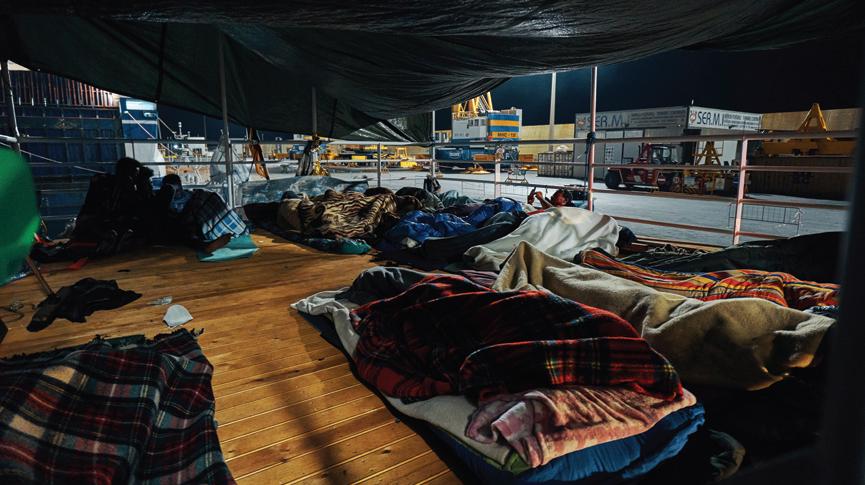
www.sea-eye.org
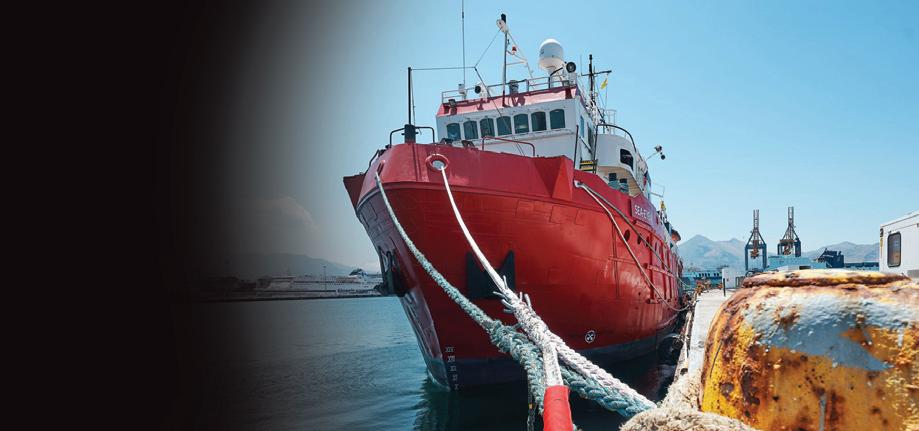
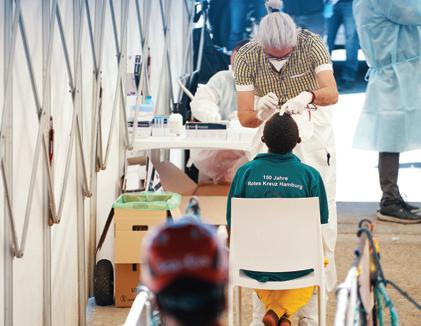
The mission
On a typical mission the Sea-Eye 4 will also have a medical team consisting of two paramedics and a doctor onboard. The search and rescue zone the ship operates in is the central Mediterranean, in international waters. This is where they search for vessels or some form of distress call, and once a vessel has been located the RHIBs are launched as first responders who will assess the situation. They then distribute supplies and radio back. If any people are in critical condition, they are transferred back to the ship to undergo emergency treatment. The large vessel can accommodate hundreds of people if need be.
Sophie said: “If we discover more vessels in distress, we go straight to the next case. If the ship is full, so to speak, then we of course request to be assigned a port of safety. Then usually we must wait because the authorities, especially these days, take longer to prepare everything. I’d say we’re at sea with the people for at least four or even five days, sometimes as long as a week or more until we finally get a port.”
While she admitted that it was sometimes hard to remain positive considering the worsening crisis, she did highlight that the lives saved make it all worth it. In fact, she’s still in contact with a number of those who were saved and seeing them down the line, from sick and malnourished to happy and healthy is a feeling money cant buy.
“We’ve always said from the beginning, even if we can just go out to save a single person, it will still be worth it,” she closed. n
